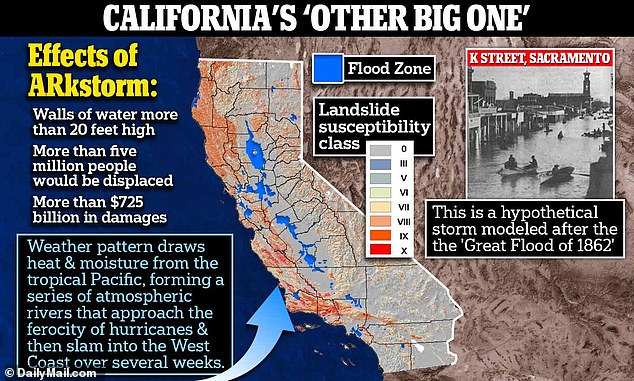California is being hit by a deadly weather system that has released more than a foot of rain in some areas, but there is a biblical storm that would make this catastrophic flooding look like a mere drizzle.
Scientists have been studying a hypothetical disaster scenario called ARkstorm, which was modeled after the “Great Flood of 1862” that left a 300-mile-long stretch of the state submerged underwater.
ARkstorm is projected to cause walls of water more than six meters high, displace more than five million people and cause at least $700 billion in damage.
While climate experts have assured the public that the current system is not the feared megastorm, studies have predicted there is a 30 percent chance of one occurring in the next 30 years.
ARkstorm was projected to cause walls of water more than 20 feet high, displace more than five million people and cause at least $700 billion in damage, making the current storm look like a mere drizzle.
The ArkStorm flood is also known as “the other big one,” after the nickname of a large earthquake expected on the San Andreas Fault.
But unlike an earthquake, the ArkStorm would cause a catastrophe over a much larger area.
Daniel Swain, a researcher at the University of California, Los Angeles, who conducted a study on the ARkstorm scenario, said: “In the future scenario, the sequence of storms will be larger in almost all aspects.
‘In general it rains more, more intensely every hour and there are stronger winds.
“Heavier localized rainfall also becomes considerably more intense. Some of the peaks in the future scenario resemble heavy Texas-style downpours.
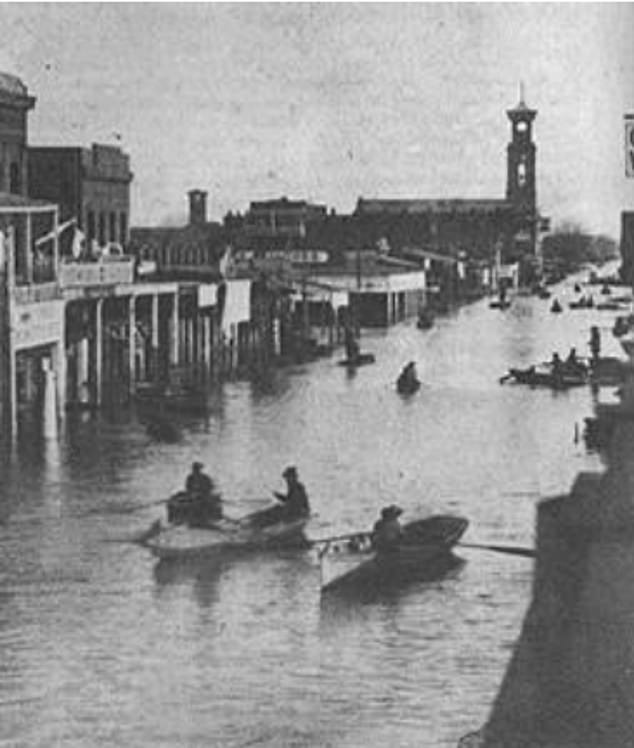
Scientists have been studying a hypothetical disaster scenario called ARkstorm, which was modeled after the “Great Flood of 1862” that left a 300-mile-long stretch of the state submerged underwater. Pictured is K Street, Sacramento during the Great Flood.
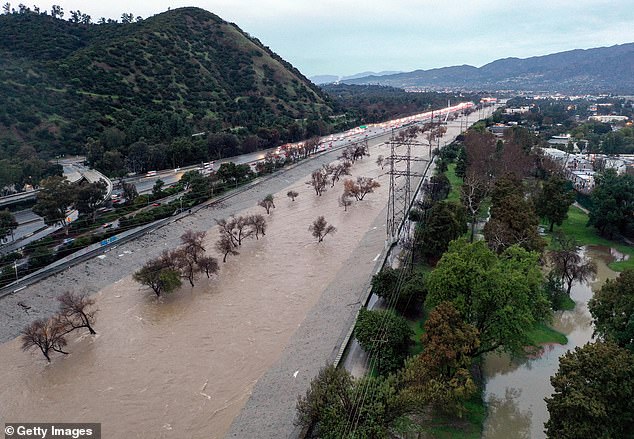
California is being hit by a deadly weather system that has released more than 11 inches of rain in some areas like Los Angeles (pictured).
“These intense hourly rainfall rates, unusual for California, can cause major problems in urban and other populated areas.”
The current atmospheric river system, called the Pineapple Express, has killed at least three people since it swept through the state on Sunday.
All three were killed by wind-blown trees: David Gomes, 82, in Yuba City, the former gold rush town, and Robert Brainard II, 45, in Boulder Creek in the coastal Santa Cruz Mountains. .
Since then, Los Angeles has been inundated with 10 inches of rain – or 75 percent of its annual precipitation in just five days, triggering 120 landslides Monday night.
Meanwhile, 130 miles off the coast of San Diego, roads turned into rivers and officials warned residents not to drive to work Tuesday morning.
As the storm was predicted to hit, many people took to social media to share news of an impending flood that would be “the worst natural disaster in world history,” explaining that it was not an ARkstorm.
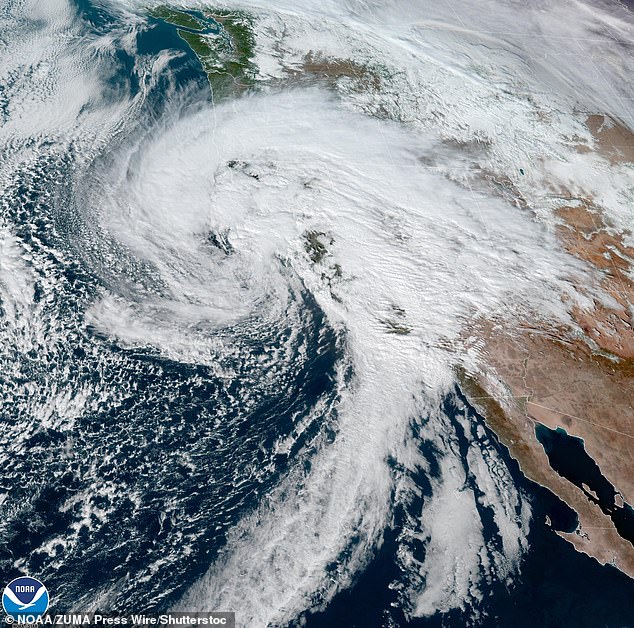
The current atmospheric river system, called the Pineapple Express, has killed at least three people since it swept through the state on Sunday.
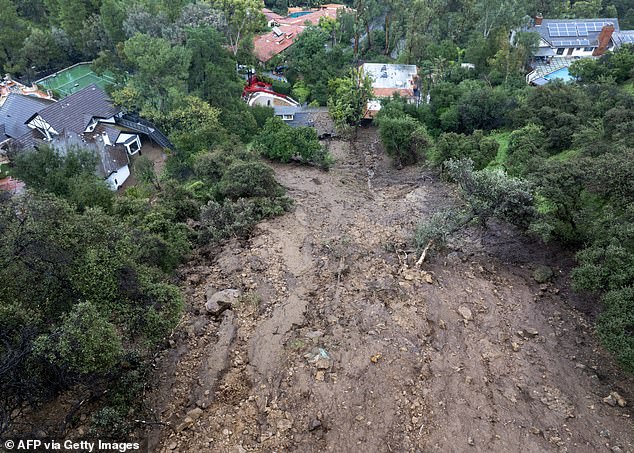
Since then, Los Angeles has been inundated with 10 inches of rain, or 75 percent of its annual rainfall in just five days, triggering 120 landslides Monday night.
That type of weather pattern draws heat and moisture from the tropical Pacific, forming a series of atmospheric rivers that approach hurricane ferocity and then batter the West Coast for several weeks.
The USGS said a storm on the scale of the one that hit in 1861 is “inevitable” and has been widely considered the worst and longest on record.
A flood like that would leave parts of cities like Sacramento, Fresno and Los Angeles under water even with the current extensive collection of reservoirs, levees and beltways.
The UCLA research projected that an ARkstorm would generate 200 to 400 percent more runoff in the Sierra Nevada Mountains due to increased precipitation since more precipitation would fall as rain, not snow.
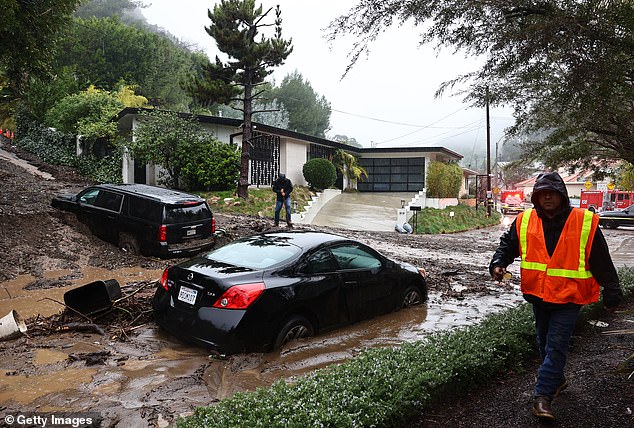
Meanwhile, 130 miles off the coast of San Diego, roads have turned into rivers and officials warned residents not to drive to work Tuesday morning.
An ARkstorm would take a few weeks to form, which would hopefully give them time to better prepare when it arrived.
Increased runoff could trigger devastating landslides and debris flows, especially in mountainous areas burned by wildfires.
“A severe winter storm in California could realistically flood thousands of square miles of urban and agricultural land, trigger thousands of landslides, disrupt lifelines across the state for days or weeks, and cost about $725,000. million dollars,” according to the USGS website. .
“The $725 billion figure comprises approximately $400 billion in property damage and $325 billion in business interruption losses.”
The scenario would also see about 25 percent of buildings statewide submerged.
“Unlike earthquakes, we can partially predict key aspects of the geophysical phenomena that would create damage in the days leading up to an ARk storm,” the USGS shared.
“Improving the accuracy, delivery time and particular measurements that these systems can estimate is very challenging from a scientific and practical point of view.”


